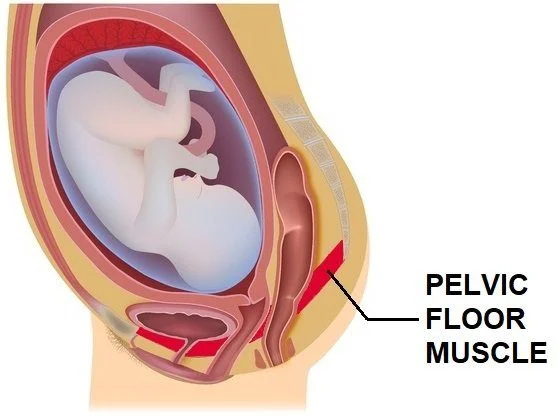The pelvic floor, a key group of muscles in the pelvis, plays a crucial role during and after pregnancy.
Understanding its functions, the changes it undergoes, and how to care for it is essential for the health and well-being of expectant and new mothers.
Anatomy and Function of the Pelvic Floor
The pelvic floor is a hammock-like layer of muscles stretching from the tailbone (coccyx) to the pubic bone at the front of the pelvis.
These muscles and connective tissues support the pelvic organs, including the bladder, intestines, and uterus in women.
They are vital in urinary and fecal continence and sexual function and are key during childbirth.
 Changes During Pregnancy
Changes During Pregnancy
As pregnancy progresses, the pelvic floor muscles bear increasing weight.
This additional load and hormonal changes that relax the pelvic tissues in preparation for childbirth can weaken these muscles.
Common symptoms associated with pelvic floor dysfunction during pregnancy include urinary incontinence, reduced sexual satisfaction, and pelvic pain.
Pelvic Floor and Childbirth
During childbirth, the pelvic floor undergoes significant stretching and strain.
A natural vaginal delivery can lead to stretching or tearing of the pelvic floor muscles, which can lead to issues such as incontinence, prolapse, or pain during sexual activity.
In some cases, medical interventions like episiotomies or the use of forceps can impact the condition of the pelvic floor.
Postpartum Recovery and Rehabilitation
Postpartum rehabilitation of the pelvic floor is essential.
In the immediate postpartum period, light exercises, like Kegel exercises, can be started to help restore muscle tone and strength.
However, new mothers must consult healthcare providers before beginning any postpartum exercise regimen.
It’s essential to consult with your local healthcare professional for individual diagnosis and treatment specific to your needs.
Long-term Importance of Pelvic Floor Health
Maintaining a healthy pelvic floor is not just crucial in the short term.
Long-term effects of a weakened pelvic floor can include persistent incontinence, pelvic organ prolapse, and chronic pelvic pain.
Regular pelvic floor exercises, even beyond the postpartum period, can help mitigate these risks.
Professional Guidance and Treatment
Professional guidance from a physiotherapist specialising in women’s health can benefit some women.
These professionals can provide tailored exercises and treatment plans to aid in the recovery and strengthening of the pelvic floor.
In cases of severe pelvic floor damage, surgical options may be explored.
Increasing Awareness and Education About The Pelvic Floor
Raising awareness about the importance of the pelvic floor in pregnancy and beyond is crucial.
Education on pelvic floor health should be an integral part of prenatal and postnatal care.
Understanding the signs of pelvic floor dysfunction and seeking timely medical advice can lead to better health outcomes.

The pelvic floor is a vital yet often overlooked component of maternal health.
Adequate care and attention to this area during and after pregnancy can significantly enhance a woman’s quality of life, providing benefits that extend well into the future.
By recognizing its importance, women can take proactive steps to maintain pelvic floor health and seek appropriate care when needed.
Healthcare recommendations for pelvic floor rehabilitation may include:
- Australian Physiotherapy
- National Continence
- Your local GP
- True Relationships & Reproductive Health (True)
Health Disclaimer: This article is for informational purposes only and is not a substitute for professional medical advice, diagnosis, or treatment.
Always seek the advice of your physician or other qualified health provider with any questions you may have regarding a medical condition.
The information provided by Gold Coast Pregnancy Massage is not intended to replace consultation with a qualified healthcare professional.
If you are experiencing any concerning symptoms or have specific health issues, particularly related to pregnancy or postpartum recovery, we strongly advise you to consult with a healthcare professional.





